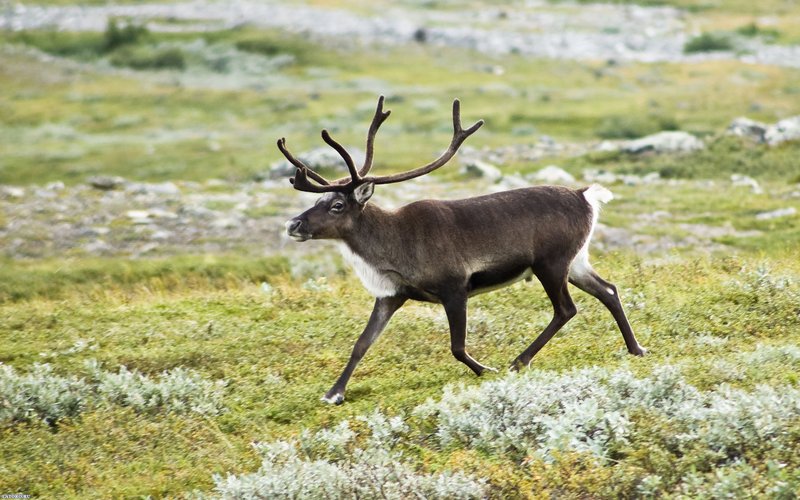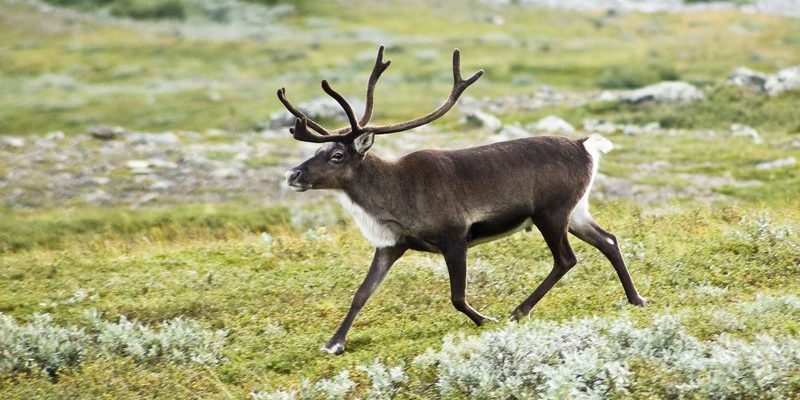
Let’s break it down: Just like any wild animal, reindeer have instincts and behaviors shaped by their environment. When we intrude on their territory, things can get tense. Picture yourself hiking through a forest, and suddenly you stumble upon a deer. It might freeze, paw the ground, and stand its ground. Reindeer can react similarly when they feel threatened or cornered. Understanding their behavior is crucial, especially for those who live near or visit areas where they roam freely.
Understanding Reindeer Behavior
Reindeer, also known as caribou in North America, are fascinating creatures. They live in herds, often migrating across vast distances in search of food and mating grounds. You might think they’re just fluffy animals grazing peacefully, but they have strong herd instincts and can be quite protective.
When you encounter a herd, remember that they communicate and respond to each other’s movements. If one feels threatened, the whole group may react. This instinct can lead to aggressive behavior, especially during certain times of the year, like the mating season. It’s essential to maintain a safe distance and respect their space.
Mating Season and Aggression
The mating season, or the rut, happens in the fall and can bring out more aggressive tendencies in male reindeer. They may compete for the attention of females, leading to physical confrontations. If you’re in the vicinity, this is not the time to approach a herd. Think of it like a football game—you wouldn’t want to jump onto the field while the players are fighting for the ball.
During the rut, males can become more territorial and protective. They might snort, stomp their hooves, or appear more alert than usual. If you’re observing from a distance, keep your binoculars handy, and enjoy the show without getting too close.
Physical Attributes and Defensive Behavior
Reindeer are surprisingly robust animals. Adult males can weigh anywhere from 400 to 600 pounds! Their size alone can be intimidating. Plus, they’ll use their strength if they feel threatened. Here’s where things can get a bit dicey.
When provoked, reindeer may charge. While they’re not known for being aggressive by nature, they will defend themselves, especially if they perceive a threat to their young. Think about a mother bear with her cubs. You wouldn’t want to get between them. The same principle applies here. Avoid getting too close, particularly during calving season when mothers are fiercely protective.
Preparing for Encounters
If you’re hiking or exploring areas where reindeer roam, preparation is key. Here are some tips to keep in mind:
- Keep Your Distance: Always observe from a safe distance. Use binoculars for a closer look.
- Stay Calm: If you encounter a reindeer, remain calm and back away slowly. Sudden movements can prompt a defensive response.
- Never Approach Young: If you see a calf, steer clear. The mother will be nearby and will not take kindly to intruders.
Human Encroachment and Reindeer Risks
As human activities expand into reindeer habitats, conflicts can arise. Whether it’s through urban development, farming, or tourism, reindeer often find themselves pushed into closer proximity with humans. This can lead to dangerous situations for both parties.
When humans encroach on their territory, reindeer may become stressed or agitated. If they start associating people with food—thanks to careless human behavior like feeding them—this can lead to dangerous encounters. Imagine a deer that’s become too comfortable with people. It’s no longer wary, and that can turn dangerous quickly.
Habitat Protection and Ethics
Protecting reindeer habitats is essential not only for their welfare but for human safety as well. Support conservation efforts that focus on preserving their natural environments. These efforts can help maintain boundaries between humans and wildlife. It also encourages a healthy ecosystem where reindeer can thrive without fear of human interaction.
Consider respecting no-entry zones and following guidelines when visiting areas known for reindeer populations. Consider it as a way of being a responsible guest in their home.
What To Do If You Feel Threatened
Sometimes, despite all precautions, you may find yourself in a situation where a reindeer appears aggressive. While such instances are rare, knowing how to react can make a difference.
First, back away slowly—don’t run. Running can trigger a chase response. Instead, move away casually while keeping your eyes on the animal. If the reindeer charges, it’s crucial to find a barrier—a tree or rock—for protection. Try to put something solid between you and the animal while continuing to move away.
Educating Others about Reindeer Safety
If you’re aware of the potential risks with reindeer, share that knowledge with friends and family. Raising awareness can lead to safer interactions for everyone. Discuss safety measures, especially if you plan to visit areas known for wildlife.
You can even create a checklist or guidelines and distribute them in community groups or social media. Sometimes, just a little education goes a long way in preventing dangerous situations.
Reindeer are incredible creatures worth admiring from a distance. While they can be dangerous under certain circumstances, understanding their behavior helps us coexist peacefully. Remember, just like any wild animal, reindeer are best appreciated in their own space.
So, next time you think of those festive reindeer, remember—behind those gentle eyes lies a wild spirit. Treat them with respect, and you’ll enjoy a safer, richer experience in their presence. Respect the boundaries, protect their habitats, and you’ll find that the world of reindeer can be both enchanting and safe.

